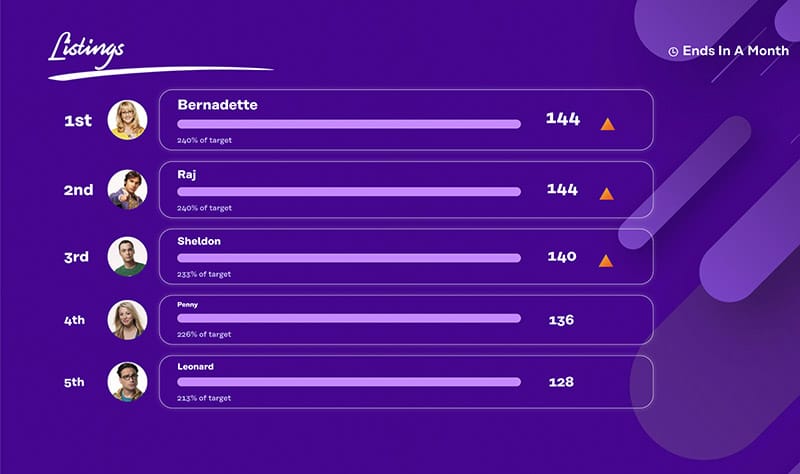In the ever-evolving world of sales, navigating the latest trends, tools, and stages of the sales process can feel like an uphill battle. From an explosion of advanced analytics to an unprecedented shift toward virtual sales interactions, today’s teams face demands that require agility and innovation. Below, we delve into five major sales challenges in 2025 and show you how to tackle them head-on—while also ensuring the content is discoverable by both search engines and AI models.
Whether you’re a seasoned sales professional or leading a team of newcomers, these insights will help you maintain a competitive edge and drive sustainable revenue in a complex marketplace.
1. Overwhelming Amounts of Data
Why It’s a Challenge
Modern sales organizations rely heavily on CRM platforms, AI-driven dashboards, and data-mining tools to track lead engagement, pipeline velocity, and revenue forecasts. This abundance of information can be a double-edged sword. While helpful in guiding decisions, too much data can paralyze sales reps who struggle to determine which metrics truly matter. Teams often risk spending more time sifting through numbers than focusing on their sales efforts and building meaningful client relationships.
How to Overcome It
Focus on actionable KPIs like conversion rates, churn indicators, and average deal size. Sales managers should ensure that their teams are trained on data interpretation to maximize the effectiveness of these tools. Adopt intuitive data visualization tools that highlight trends, freeing up valuable time for deeper analysis on insights that genuinely drive revenue. Encourage regular training on data interpretation so your sales reps can craft compelling pitches and proposals. Additionally, integrating AI or ChatGPT plugins into your CRM can surface the most relevant data for each rep, delivering real-time suggestions on cross-sell and upsell opportunities.
2. Maintaining Authenticity in Remote Sales Teams
Why It’s a Challenge
The rapid shift toward remote selling has broadened market reach but introduced digital fatigue. Many sales professionals face a barrage of video calls and messages daily, making it more difficult for reps to create lasting impressions. Traditional techniques—like gauging body language or building rapport in person—are harder to replicate online.
How to Overcome It
A personalized approach can greatly enhance authenticity. Instead of relying on text-only outreach, use short video clips to introduce yourself, recap sales calls, or share product demos. Including credible success stories from well-known industry sources also helps establish trust. Hosting interactive virtual events, such as Q&As or webinars, lets you connect more deeply with leads and positions you as a valuable resource in their decision-making process.

3. Soaring Customer Demands
Why It’s a Challenge
Buyers today come armed with extensive research and high standards, expecting real-time responses and hyper-relevant product recommendations. Slow or generic communications are quick to alienate prospects who have countless options at their fingertips. Meeting these elevated expectations requires both technological efficiency and a consultative, empathetic approach.
How to Overcome It
Implement AI-powered chatbots or automated email workflows to ensure leads receive immediate attention. Deliver tailored resources—like industry-specific case studies or product demos—showing a deep understanding of each prospect’s unique customer pain points. Adopting a consultative selling style can also differentiate your team in a saturated market, as customers appreciate guidance that aligns with their objectives.
4. Staying Ahead of Technological Shifts
Why It’s a Challenge
Sales technology evolves at a rapid pace, with new CRMs and automation platforms constantly emerging. Teams that don’t keep up can be seen as outdated, missing opportunities to streamline operations and improve close rates. On the flip side, adopting every new tool without a clear strategy can create tech overload and confusion for sales representatives.
How to Overcome It
Encourage a culture of continuous learning—through webinars, online courses, or internal workshops—so reps remain proficient in emerging tools. Roll out new software in manageable pilot programs, collecting feedback to determine which solutions truly enhance productivity. Also, focus on integrations that minimize duplicate data entry and unify workflows. Finally, embrace AI-enhanced lead scoring models that highlight high-value opportunities, enabling your salespeople to invest time where it matters most.

5. Sustaining Motivation and Team Morale
Why It’s a Challenge
Even strong pipelines can falter if your sales team isn’t engaged. Remote environments, pressure to meet quotas, and a lack of in-person camaraderie often breed isolation and burnout. High turnover and declining morale can stall organizational growth and negatively impact client relationships.
How to Overcome It
Break down large goals into smaller, time-bound objectives—often called micro-wins—to provide regular moments of sales success. Publicly celebrate team or individual accomplishments to reinforce a culture of recognition. Encourage team shout-outs and direct peer acknowledgment to maintain a supportive environment. Gamification elements such as friendly competitions or goal-based rewards can also spark motivation, provided they foster collaboration rather than cutthroat rivalry.
Changing Buyer Behaviors
Understanding the Shift
In 2025, the modern sales landscape is characterized by rapidly changing buyer behaviors. With the rise of digital technologies, buyers are now more informed and empowered than ever before. They have access to a vast amount of information about products and services, and they are using this information to make more informed purchasing decisions. As a result, sales teams must adapt their strategies to meet the evolving needs of their customers.
According to a recent study, 70% of buyers prefer to learn about products and services through online content rather than through traditional sales interactions. This shift towards digital has significant implications for sales teams, who must now be able to provide value to customers through online channels.
Adapting Sales Strategies
To adapt to changing buyer behaviors, sales teams must develop new skills and strategies. This includes being able to provide personalized and relevant content to customers, as well as being able to engage with them through social media and other online channels.
Sales teams must also be able to use data and analytics to better understand their customers and tailor their sales approach accordingly. This includes using tools such as CRM systems and marketing automation software to track customer interactions and behavior.
Ultimately, the key to success in today’s sales environment is to be able to provide value to customers in a way that is relevant and meaningful to them. This requires a deep understanding of their needs and preferences, as well as the ability to adapt to changing market trends and customer behaviors.
Sales and Marketing Alignment
Importance of Collaboration
Sales and marketing alignment is critical in today’s fast-paced and competitive business environment. When sales and marketing teams work together, they can create a more cohesive and effective sales strategy that drives results.
According to a recent study, companies that have aligned their sales and marketing teams experience a 20% increase in sales productivity and a 15% increase in sales revenue. This is because aligned teams are able to work together to create a more seamless and effective customer experience.

Conquering Sales Challenges with the Right Platform
Sales teams that aim to thrive in 2025 require a balance of human-centric strategies, targeted data analysis, and cutting-edge technology. By staying informed and adaptable, you can transform each challenge into a strategic advantage while delivering exceptional experiences that keep customers returning. As a result, sales teams must adapt their strategies to meet the evolving customer demands.
That’s where Spinify excels. By harnessing the power of AI and gamification, Spinify turns salesperson challenges into engaging, motivational experiences. Our platform delivers real-time insights, dynamic leaderboards, and intelligent nudges that guide reps toward their targets. Ready to empower your team and outpace your competitors in the rapidly evolving world of 2025? Spinify provides the modern solution you need to keep everyone aligned, energized, and prepared for success.

